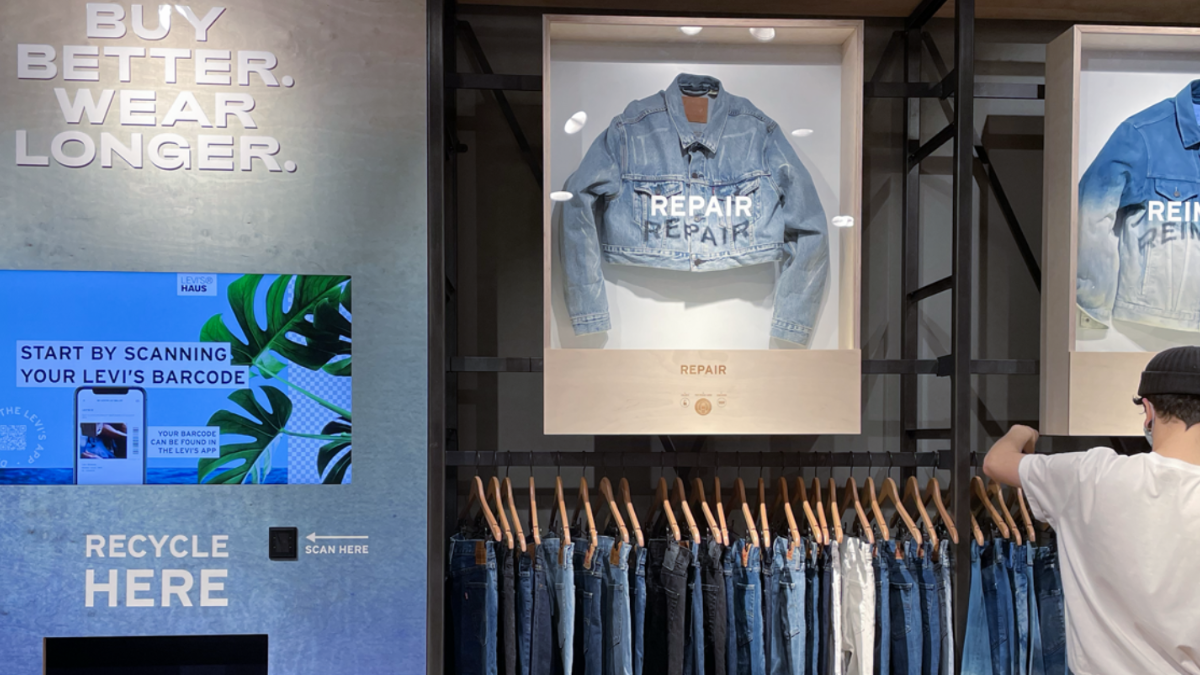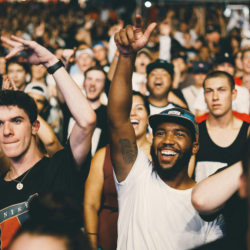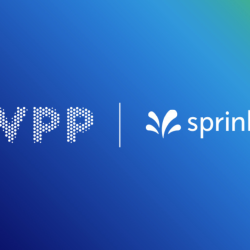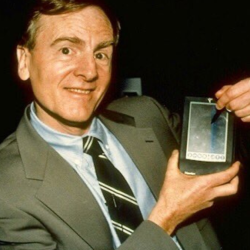Cameron, 35, founded SharpEnd / io.tt in 2014 and sits across the world’s fastest-growing IoT SaaS business with a mission to create the biggest ever digital unlock for brands — their products becoming interactive media.

Against the grain of the industry, SharpEnd / io.tt has focused on supporting brands creatively and strategically, defining and delivering value from IoT for organisations and, most importantly, consumers. Cameron has grown SharpEnd / io.tt to a team of more than 50 people, across two continents, and together, the team proudly supports a wide range of the world’s most ambitious brands such as Estée Lauder Companies, PepsiCo, Levi’s and Balmain.
The integrated solutions provider io.tt, handles billions of touchpoints every day in over 130 countries.
Your website says you’re in the ‘connections business’, you have a SaaS platform and a creative studio. How did you start out? Did you have a clear idea of what parts of the business you wanted to add later, if your initial business began to take off?
My first job was selling classified advertising in a van-buying guide, What Van?. Some of my happiest days. The key roles that gave me the idea for SharpEnd were a spell at the media and marketing service company Engine, where I was a manager in their mobile division, and then my short stint at an IoT platform. The IoT platform role helped me identify that there was a massive creative vacuum in this new world that was fast approaching where everything was becoming connected.
The idea for SharpEnd came when I was sitting in The Bull and Bush pub in North London and saw someone scan a QR code on a beer mat. I didn’t know what was happening, but I had an understanding that this was going to be something everyone would be doing one day. It made sense for brands to connect with consumers through their own physical products. The infrastructure that would power this connected future didn’t exist, so I set about assembling the team to build it, and knew the initial component was creative thinking to make sure people had good experiences of the tech. It would then need the right software and platform elements to support the billions of interactions happening every day through technologies, such as QR Codes and NFC.
After years of slow and steady growth we took a round of funding to build out the technology platform division of our business — io.tt. It now handles billions of data transactions, from technologies such as QR Codes, NFC and Augmented Reality.
What interesting work have you delivered for brands lately? Anything out of the ordinary you’re proud of?
This month, we’ve launched a new summer campaign for Molson Coors’ Madrí Excepcional, the Mediterranean style lager called Madrí Conectada. It’s an industry-first: an immersive, 360 connected campaign, where a consumer’s phone unlocks a digital door to Madrí Excepcional’s world. By leveraging the io.tt platform we’ve transformed traditionally passive media into active touchpoints, and are giving fans a taste of Madrid with personalised city maps to Madrí Excepcional destinations, exclusive music events and voice-activated features. The campaign envelopes fans and builds on the experience at each touchpoint, offering something dynamic each time.
Which sectors are embracing ‘connected experiences and products’ most and why? Do you see this changing in any way in the near future?
Although still an emerging trend in some industries (such as beauty) we’re seeing more brands in the drinks and fashion sectors in particular, embracing connected packaging and giving their consumers an experience-led gateway to exclusive content. In SharpEnd’s Connected Experience Report (the first-ever definitive study on how and why consumers engage with connected products) a clear affinity with connected products was detected — 65% of consumers said they would willingly take the time to work out how to engage with a product via their smartphone. This shows how consumer adoption and awareness is accelerating, and connected packaging is very much becoming a mainstream and commonplace part of modern retailing.
How does an online interaction with a product through connected packaging affect in-store retail environments? Is it taking people out of stores or driving them in?
The old retail model (visit, purchase and leave) appears increasingly obsolete for e-commerce savvy, experience hungry consumers. But this change doesn’t signal the death of bricks and mortar stores. Instead, retailers are reimagining the concept of retail environments and driving people to stores with new concepts such as retail gamification which combines elements of play with branded incentives to subtly engage consumers in non-traditional ways. It’s ultimately about finding creative ways to connect with consumers via the channels they own: their connected products and via connected experiences in their retail environments.
Levi’s is one brand that has done this well, merging their physical world with digital. Piloted in 2021, Levi’s Donation Wall was launched as an integrated ‘denim donation hatch’ which rewards consumers with in-store credit for donating used denim, and signing up to the Levi’s loyalty program, RedTab. Now scaled across four countries and 15 stores, the Levi’s Donation Wall encourages Levi’s customers to actively participate in Levi’s sustainability mission, all the while incentivising CRM sign-ups. Another example of how Levi’s has encouraged footfall and interaction in-store was to commemorate 149 years of the iconic 501 blue jeans. Levi’s played with the simple temptation of a ‘big red button’ at Regent Street, London. Hitting the button ignited a 360 projection mapping experience, immersing visitors in a 1960s world; drawing them to the new 1960s-inspired Levi’s collection Crazy Legs.
What advice would you give brands looking to ‘connect’ more with customers?
Deliver a clear message and don’t overcomplicate things. A call-to-action needs to be straightforward, not overly scientific and describe the end user experience in as few words as possible. Its important consumers can learn to trust brands they choose to engage with. Also, if you’re looking to connect more with consumers, make your experience meaningful. Knowing your consumer intimately, including their preferences for technology and where they spend their time online, will mean you can design a tailored experience for them. Finally, brands need to design for context in order to meet their consumers at every stage in the customer journey with a relevant, connected experience.
Whether you’re designing the experience to be fun, useful or just interesting, give it a strong call-to-action so interaction doesn’t just end there.
Lastly, you started SharpEnd when you were 25. What lessons did you learn from becoming a business leader at that age?
In the last few years I’ve really come to understand the value mentors bring to my life. Particularly as a young founder, my mates don’t often go through the same things I do, and to have some experienced ‘been there done that’ people around you is very comforting. Also, get a good lawyer! To be able to trust your lawyer and to know they care for you and your business is truly a wonderful feeling. The last bit of advice is: don’t call yourself an entrepreneur, it’s a bit lame. Founder will do.
Featured image: Levi’s Donation Wall































